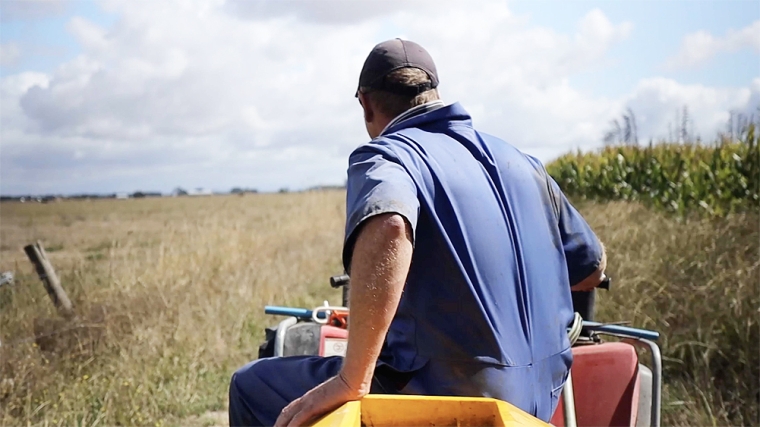
By Andrew Laming*
With the ongoing inquiry into rural lending, one of the central themes from both the Reserve Bank and the banks is that agri lending is ‘riskier’ than home loans so therefore a higher margin needs to be charged to justify the lending.
Two things have now happened over the last 10 years. Firstly, the banks have increased the price of their loans, but perhaps more importantly they have also reduced the risk they take at the same time.
Let’s unpack that statement a bit more.
A bank considers two main factors when looking at a loan. Firstly, what is the likelihood that things will go wrong (i.e. default) and secondly, how much of the loan that they will be able to get back if things do go wrong. When a loan does go wrong, the bank assesses how much they might lose on the loan, and this is referred to as a ‘credit impairment allowance’ or an ‘individual provision.'
Now, it’s very important to note that an individual provision (an ‘IP’) doesn’t necessarily turn into an actual loss, the bank just thinks it might.
From experience, banks prefer to budget or ‘provision’ a higher number than they actually do lose, as they don’t like surprises.
Banks don’t publicly report the actual losses they make so we can only use the IP data as a proxy for this detail. However, it was telling when Antonia Watson, CEO of ANZ, was asked at the banking inquiry how many defaults they were running in their agri loan book. Her answer - “Just two” – in over $15bn of loans.
So, let’s look at the data. The graph below shows the level of total annual bank Agri IP’s (main banks + Rabobank + Heartland) as a percentage of their total advances since 2018.

While that graph looks like a roller-coaster, it’s actually far from it- it is relatively settled at an average of 0.14% (14 basis points) since 2018 +/- 10bps. This is about $80m per year.
So, if IP’s are running at 0.14% on average, then that’s an effective cost that a bank needs to factor in each year into its margin to cover the ‘losses’.
Let’s now compare Agri IP’s to other lending sectors - see the below graphs for Agri IP’s plotted against housing and business IP’s (as a % of their total loans).

The IP’s in the housing market are very low - at about 0.01% of total loans. Business is currently tracking higher, although was lower than agri pre-Covid.
What does this mean for bank pricing and margins?
Well, there is a simple way of looking at it, and a more complex way of looking at it.
Firstly, simple; looking at the current IP levels in agri at the average of 0.14%, you could step back and say that agri loans need to be priced at 0.13% more (0.14%-0.1%) than housing to offset the extra potential losses that they might face.
Maybe, you could even take the peak difference – of ~25bps and say that’s the difference that should be allowed for.
However, our market observations typically see a difference in average margin of about 1.5% between home lending and agri lending*. Interestingly, in the Reserve Bank’s own submission to the inquiry, they estimated that the banks price the average agri loan about 1.7% higher than the average home loan.
(*This is an average but there is a very wide range of farmer margins that range from below home loan rates to much higher).
Going a step further, if you took that extra 1.5% ‘risk margin’ gathered by each bank and put that against the entire Agri book of $62bn, that means the banks could lose $930m of agri loans each year and still be ‘even’ with their home loan margins.
That’s a lot. Having been in the industry for a long time, we know from our observations and discussions with banks that the annual agri bank losses don’t run as high as the individual provisions we highlighted in the above graph (~$80m p.a), and certainly nowhere near $930m.
But it’s a little more complicated than this.
Bank margins also have to cover a few other things. They have to cover operating costs and the cost of holding additional capital due to (theoretical) higher risk that is associated with agri than in home lending. They also have an eye for the future, to cover one-off events that might impact their portfolios.
But what’s interesting, is the Reserve Bank submission suggested that the additional regulatory capital weights that banks have to carry for agri lending (due to perceived higher risk), only explains about 0.6% of the difference in rates.
Interesting. That’s a large gap between that figure of 0.6% and the 1.5% to 1.7% additional that farmers pay for their interest.
If that difference can’t be explained by other factors, then that’s additional profit margin that farmers are paying to the banks over and above the equivalent home loan. A difference of 0.9% to 1.1% equates to a loss of ~$600 mln from the NZ Agri economy each year.
That’s money that could be used for reinvestment, debt reduction and above all, additional confidence.
So why are agri lending losses so low?
Banks are structurally set up to not lose money on agri lending and they do a good job of it.
There are a few factors at play here, but ultimately it's based around these things:
- Loan-to-value ratios (LVRs) in rural lending are typically much lower than home lending. A maximum LVR on rural lending is usually about 60% with the average much lower. It would take a very large drop in asset value at sale before a bank loses any money.
- As well as being secured over the cashflows of the business, the lending is strongly asset backed. Loans are typically secured against land and farm related shares in livestock which typically there is an established market for, regardless of the individual performance of a business. Conversely, loans to non-farming businesses typically result in significant loss as the business value erodes completely when the business fails.
- While there is volatility in commodity prices, they are nearly always cyclical, returning to mid run averages within 2-3 years from both the high and low points of the cycle. When looking through the cycle, returns are very steady. Additionally, farming borrowers typically have plenty of lending ‘headroom’ to access further capital and see out the low points of the cycle by virtue of the first two points.
- Banks are very adept at managing stressed accounts with early intervention to ensure their position is protected, including supporting a deteriorating lending position with further capital at times of downturn so that the eventual asset realisation (and debt recovery) can occur at times of better farm sale liquidity.
But should banks have their cake and eat it too?
The low losses and higher margins may suggest the risk is materially lower than what the banks are allowing for.
In other words, do they now have a situation where they have an excellent risk and a premium return?
Or you could turn that statement on its head - if they do want to continue to achieve higher margins, should the risk levels they take on reflect that?
With this information to hand, here are some additional questions that might be asked at the inquiry:
- If the Reserve Bank says that only 0.6% of additional margin is attributed to the difference in regulatory capital between the types of bank lending, then why have the bank margins increased by more than double this?
- If the bank’s own risk models are driving different (higher) risk outcomes that the Reserve Bank’s own modelling - why is that, and are they valid?
- What other reasons are there for the difference in margin that need to be better understood?
- What are the actual losses that banks are having to absorb in agri over the last period?
*Andrew Laming is a founding director of NZ Agri Brokers Ltd (NZAB) and is based in Timaru.
4 Comments
When the banks are making a good return for their shareholders with cookie cutter loans to housing why bother with rural?
Housing loans are tick the box exercises. Why go to the trouble of employing staff who need to understand profit and loss and cashflow spreadsheets and needing to assess soft skills such as integrity and business nous.
All too hard.
Milk housing for all its worth.
How do you “force” them to lend more for less?
This is a very good exposition of bank rural lending and the risks involved which are very low. It's hard not to conclude that banks charge additional margins above allowing for the risks because they can. The only way a farm owner can adjust apart from attempting to negotiate with their bank is by focusing on debt reduction.
Banks are businesses and they exist to make profits - it’s pretty simple. The bigger question should be why are these banks not competing for each others rural loan books and digging into those margins to do it? That question starts to sound a bit uncomfortable when you consider it’s in everyone’s interest not to compete ‘too hard’

We welcome your comments below. If you are not already registered, please register to comment.
Remember we welcome robust, respectful and insightful debate. We don't welcome abusive or defamatory comments and will de-register those repeatedly making such comments. Our current comment policy is here.